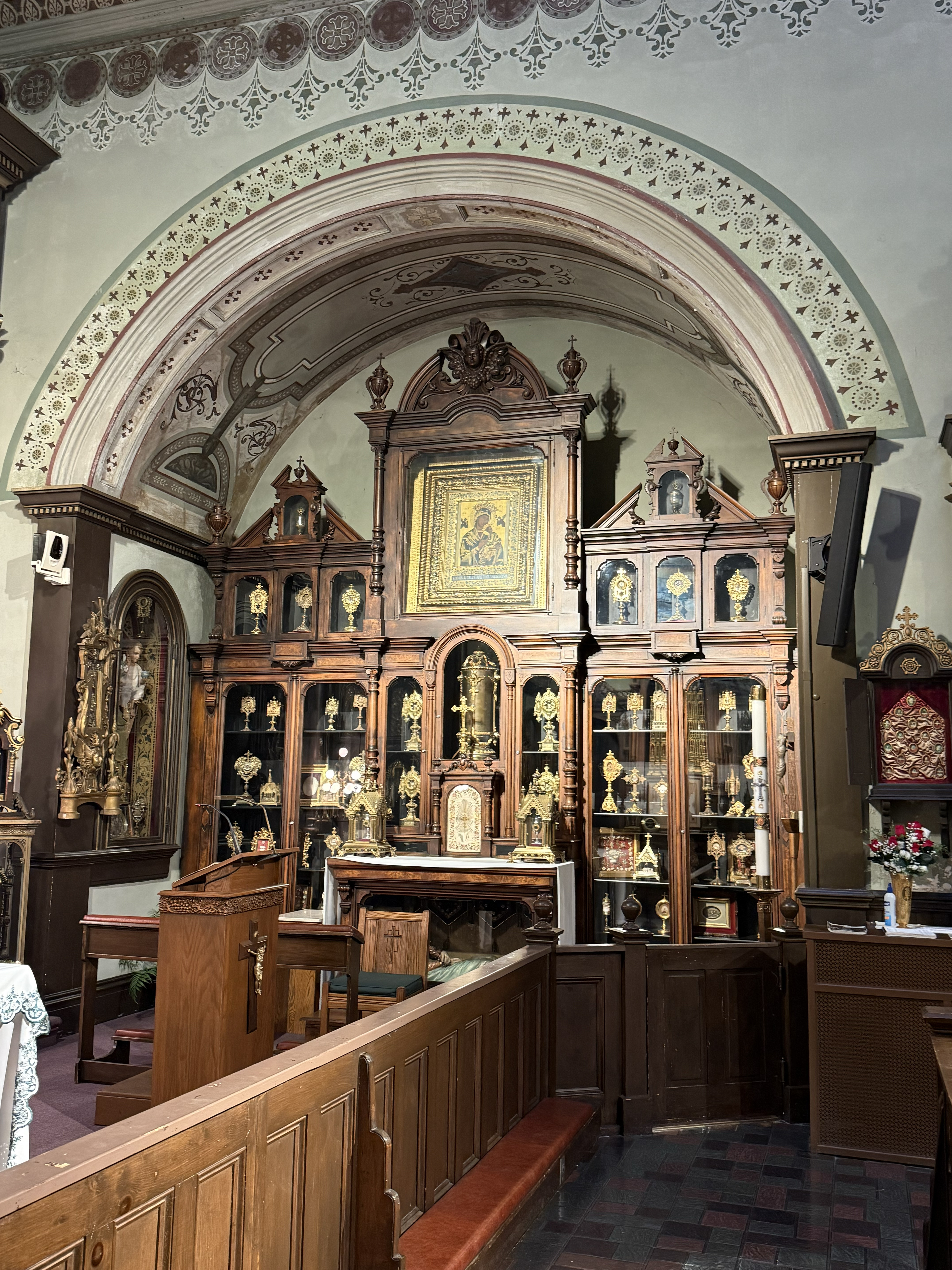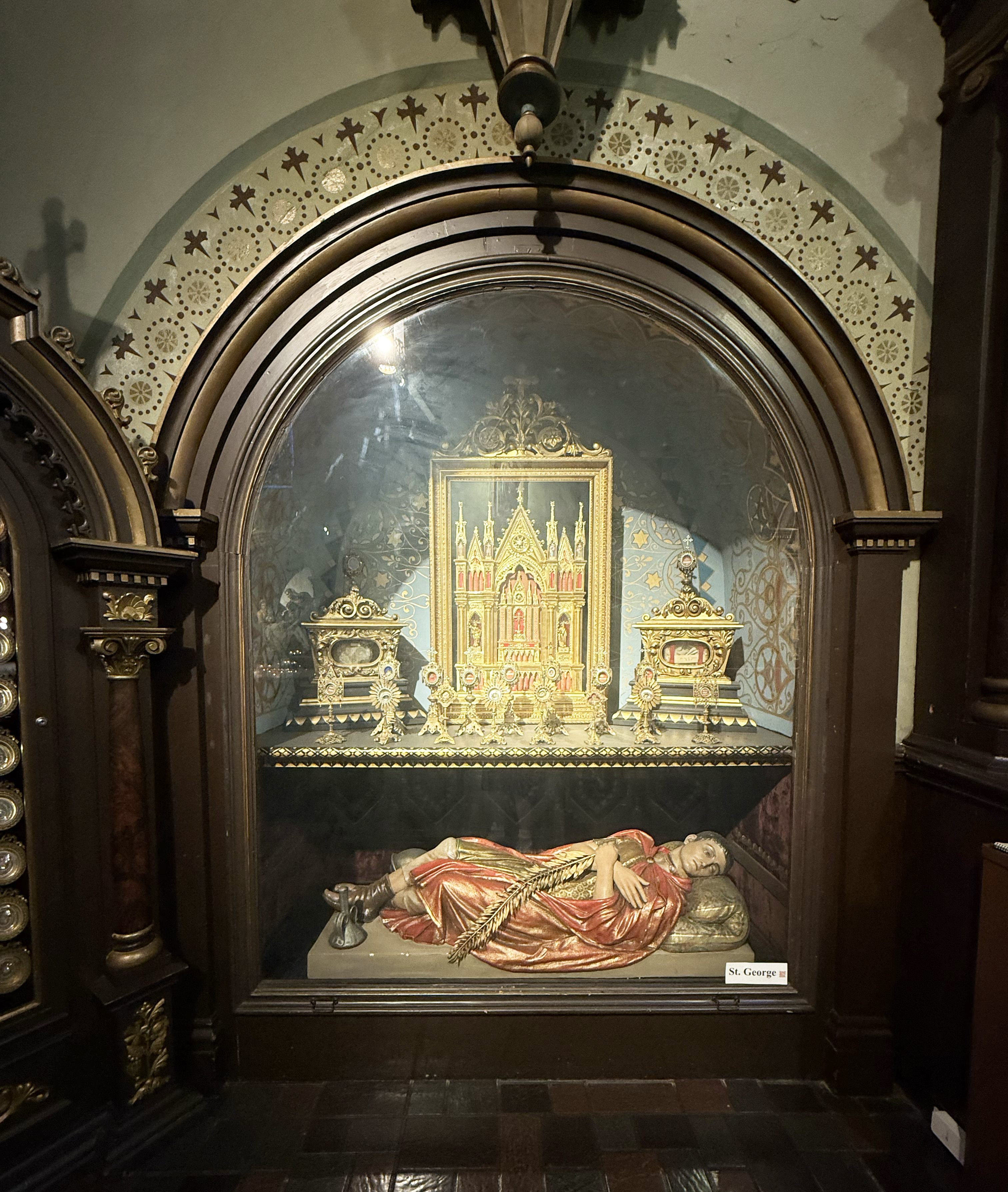Saint Anthony’s Chapel in Pittsburgh, Pa. Wikimedia Commons / Photo by Giovanni Guida

Editor's note: The following text is a transcript of a podcast story. To listen to the story, click on the arrow beneath the headline above.
NICK EICHER, HOST: Today is Tuesday, August 26th.
Thank you for turning to WORLD Radio to help start your day.
Good morning. I’m Nick Eicher.
MARY REICHARD, HOST: And I’m Mary Reichard.
Coming next on The World and Everything in It: faith, history, and mystery.
In a small church in Pittsburgh, ancient Catholic relics draw hundreds of people making the pilgrimage year after year.
REICHARD: Across the centuries, relics have stirred devotion—and debate. But what do they mean for faith today? WORLD’s Emma Eicher takes us to one of the world’s largest collections.
SOUND: [Door open and close, sound of church]
EMMA EICHER: In the hilltop neighborhood of Troy Hill in Pittsburgh, there’s a little chapel called St. Anthony’s.
It’s home to the most Catholic relics in the world—second only to the Vatican.
GREG JELINEK: Here's where that little thread from Mary's veil would be …
Deacon Greg Jelinek has served at St. Anthony’s for more than 50 years.
JELINEK: At that top little enamel medallion, there's a picture of Mary, and then a little piece of her veil underneath. And then with Christ's head rock from the tomb where he was buried. And then here: a little thread from St Joseph's clothing.
He grew up in this church, wandering through the pews as a toddler.
JELINEK: On the archway there's an inscription which reads corpora sanctorum in pace sepulta sunt. The bodies of the saints are buried here in peace. And I think that was the goal of our first pastor, Father Mollinger, who built this chapel.
In the late 19th century, Suitbert Mollinger used his wealth to buy relics. And he placed them in elaborate “reliquaries.” That’s a place where relics are displayed often hand crafted and decorated.
JELINEK: This one is a relic of our Lord's cross. It's the little splinter in the center of the reliquary there.
Here, the reliquaries range from intricate embroidered displays to stunning, gold-washed crosses a few feet tall. That splinter Jelinek pointed out is held in an ornate cross under a particularly elegant reliquary:
JELINEK: It’s four golden pillars with a dome. There are four carved angels, one on either corner of the dome, and the dome is covered with a red velvet fabric. Just a fairly opulent way to honor this particular relic.
There are more than 5,000 relics in the chapel. And they’re everywhere—mounted on walls, or clustered together on shelves going all the way up to the high, arched ceiling.
JELINEK: Each one is a jewel. Each one is a little masterpiece.
Relics come from the bodies of Saints canonized in the Catholic church. They can be anything: bones, pieces of skin, hair, blood, and the church has to officially verify their legitimacy.
The popularity of relics dates back to Medieval times. Michael Haykin is a professor of church history at Southern Baptist Theological Seminary in Kentucky.
MICHAEL HAYKIN: Relics become a very, very significant part of the life of the church—not only the spirituality of individual believers, but they become essential to the large-scale building projects that take place in the Middle Ages.
People paid money to see relics from the saints, which guaranteed revenue for cathedrals and church buildings.
And their significance to the church was a holdover from even more ancient ideas.
HAYKIN: One of the key elements of Roman paganism was that certain objects and places had spiritual power associated with them, it’s called Numen.
So when people joined the church during the Middle Ages, they brought a pagan understanding of numen with them.
HAYKIN: And so it was believed that if a person had lived a remarkably holy life after their death, things that they may have touched, but also especially their body, was still charged with spiritual power, almost kind of in some ways, like radioactivity.
Not only would people go to see the relics, but they would touch, kiss, or even kneel to them. It’s called “veneration” in the Catholic faith. And it means giving honor or respect to someone in a special way. It usually involves praying directly to the saint whose relic is being venerated, asking for intercession.
Greg Jelinek says Catholics don’t see the relics as magic or possessing powers. But, he says, they serve as important reminders of martyrdom.
JELINEK: It's the example and life and presence of the saint herself or himself that give us the courage and the strength.
And Jelinek believes the Holy Spirit may still dwell in the bones of the saints—even centuries later.
JELINEK: St. Paul teaches us, do you not know that your body is a temple of the Holy Spirit dwelling within you, given to you from God? And that's no more true for any of us than for these saints who lived lives that were filled with the work of the Holy Spirit, and who were truly inspired by the Holy Spirit. And when the soul leaves the body, does the body become negligible?
But while the Catholic church officially holds that veneration is not worship, Michael Haykin says real spiritual dangers can appear regardless.
HAYKIN: I mean, the Roman Catholic theologians make this distinction between worship and veneration. I think that line is lost on the person in the pew in many Catholic churches. It has tended to take the focus away from Christ and from the indwelling of the Holy Spirit and the Spirit's power.
There are still some things Protestants and Catholics can agree on. Haykin says relics don’t have spiritual power, but they do hold a different kind of significance. For everyone.
HAYKIN: There are men and women who have lived remarkably holy lives that can be models for us. And I think the impulse there is similar to the impulse that you find in the Roman Catholic veneration of relics, which is the need for heroes.
And Jelinek agrees.
JELINEK: If you know that these are the remains of people who are great models of faith, then to be in the presence of their physical remains makes me want to strive to learn from them and to become more like them in my own spiritual life, in my own faith quest.
St. Anthony’s still holds weekly Mass and worship services for its small congregation. Tourists come and go, peering up at the relics of saints long gone—locked behind glass and gold.
Reporting for WORLD, I’m Emma Eicher, in Pittsburgh, Pennsylvania.
WORLD Radio transcripts are created on a rush deadline. This text may not be in its final form and may be updated or revised in the future. Accuracy and availability may vary. The authoritative record of WORLD Radio programming is the audio record.



Please wait while we load the latest comments...
Comments
Please register, subscribe, or log in to comment on this article.